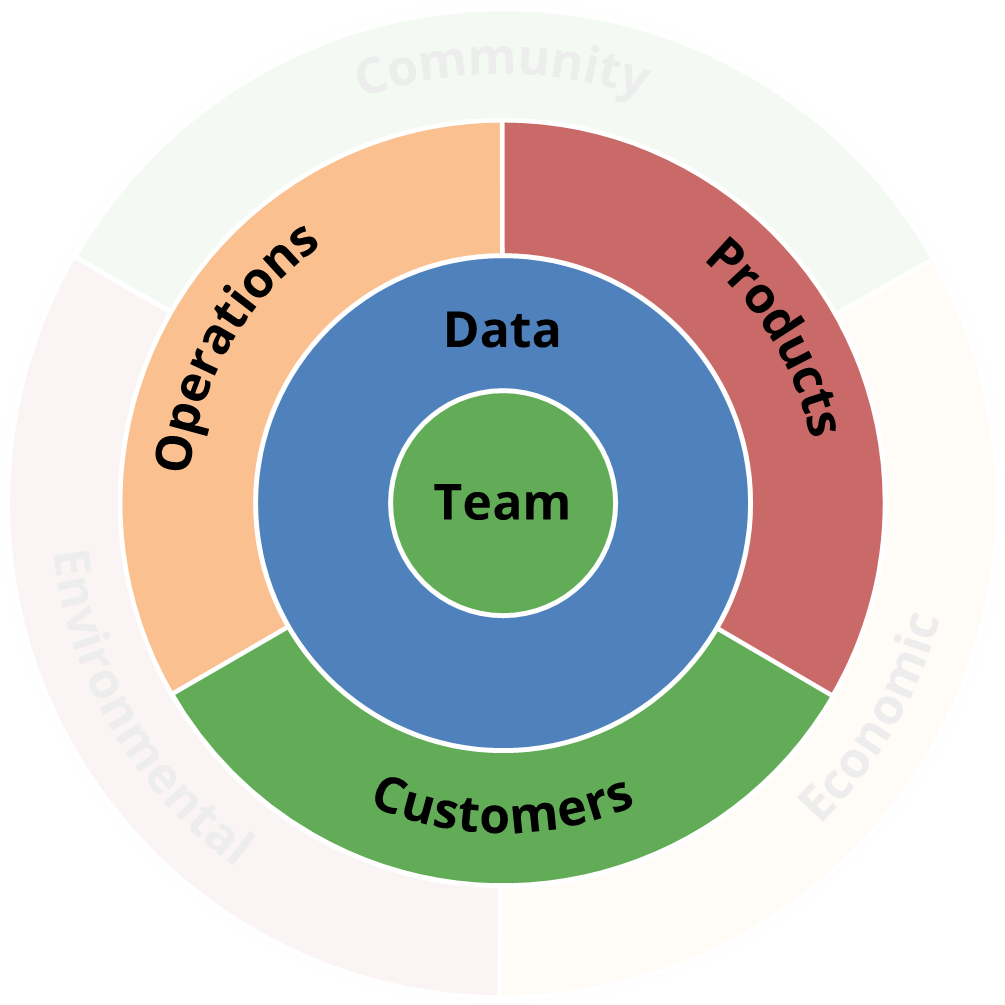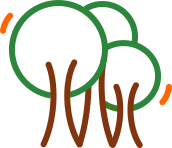The phrase “digital business” gets tossed around a lot these days. It’s often used to describe companies with sleek apps, AI-infused dashboards, or some “game-changing” gadget. But if we’ve learned anything in the past decade, it’s that technology alone isn’t enough to sustain success.
Lots of opinions, with fancy slide decks and pithy bullet points that, in the end, don’t really say much of anything. Too often they are skewed along a single critical dimension (information that connects you with your customers … data that transforms your products and markets … analytics that let you see the future …) but no concrete plans. Usually, “digital strategy” comes across as a sales demo for some cloud or SaaS offering, an introduction to a major $$ consulting engagement, or maybe a pitch for organizational change as the Marketing group tries to take over IT (or, the IT team makes a play to bring in Marketing).
Or maybe Engineering wants to take control of it all. Hmm, wouldn’t that be interesting …
Framework: The Five Components
A great digital business doesn’t just adopt technology—it integrates it into the DNA of how the company operates, creates value, and connects with people. To get there, you need a framework—a way to think about all the moving pieces that make up your business, how they fit together, and how technology can help them work better.
That’s where the Five Core Components come in: Customers, Products, Operations, Data, and People. This framework isn’t a checklist or a rigid set of rules. It’s a way to focus your efforts on the areas that matter most and build a strategy that evolves with your business.
The magic of this framework is its adaptability. It has helped industries as diverse as logistics, healthcare, and forestry innovate and thrive. Yup, I said it … forestry. If you’re wondering what drones, IoT sensors, and carbon credits have to do with trees, lets look at some examples, and explore how framing our thinking in this way can drive innovation in ForestTech and beyond.
Customers: Innovating Experiences That Create Value
In a digital world, serving customers is about more than offering products and service. It’s about understanding their needs, anticipating their expectations, and building experiences that keep them coming back. From call centers and outbound marketing efforts, to websites and e-commerce tools that bring products directly to the customer (and return detailed feedback), to CRM systems that help us track and analyze complex market relationships – data-enabled connections can tie us tightly with our customers, and help us grow. But have we connected with our internal systems, to eliminate transactions and speed the value? And can we move beyond transactions, to develop tighter relationships with customers – maybe bringing them into product development or strategic planning?
In forestry, this isn’t just about timber buyers looking for sustainably sourced wood. The “customers” in this space are more diverse than you might think:
- Landowners need tools to monitor and manage their forests remotely, especially when they’re balancing profitability with sustainability.
- Investors are looking for data-backed insights into forest health, carbon capture, and long-term yield potential. Carbon credit systems are creating entirely new market opportunities.
- Conservationists and NGOs want transparency—proof that forests are being managed responsibly and biodiversity is being protected.
A digital business in forestry might use AI-powered platforms to help landowners predict the best times to harvest or deploy blockchain for timber traceability, reassuring buyers and regulators alike. Innovating around customer experiences creates trust, strengthens relationships, and differentiates your business from competitors. For all types of customers, the key is to listen to their voice and solve problems that matter.
Products: Embedding Innovation into Core Offerings
Here’s where things get interesting. Products in a digital business aren’t just physical objects or static offerings – they are dynamic platforms for delivering value. This doesn’t mean you need to turn your product into the next iPhone, but it does mean rethinking how your product interacts with and incorporates technology. Information about our products, operating in the field, is becoming easier to gather – and is quickly becoming an assumption, table-stakes expectations from our customers and markets. Can we generate new forms of revenue, and deliver differentiating features in our products and services?
Forestry is full of opportunities to embed technology into products:
- Smart Forest Management Systems: Think IoT-enabled sensors that monitor soil moisture, growth rates, and pest activity, sending real-time data straight to a landowner’s phone.
- Carbon Credit Platforms: Tools that help landowners quantify their forest’s carbon capture potential open up new revenue streams while driving sustainability.
- Remote Sensing Services: Drones, lidar, and satellite imagery turn a vast forest into a detailed digital map, providing insights that would have taken months to gather on foot.
Innovating your products doesn’t just create differentiation—it unlocks entirely new ways to engage with your market.
Operations: Driving Efficiency and Agility Through Innovation
If customers and products are what you see on the surface, operations are the engine under the hood. They’re the processes, systems, and workflows that make everything run smoothly (or not). Digital businesses take operations seriously—not just to cut costs, but to make their entire organization more agile and scalable.
Do your teams really understand the systems and processes that automate internal transactions – the details of running your business every day – and use them to their full potential? This covers an amazing range of systems, from the daily and mundane (email, calendaring, basic communications), to accounting systems that tick and tie your order-to-cash, purchase-to-pay, and make-to-ship processes (ERP). Most of us have reasonably mature systems in place for all of this – but our “revolution” here will focus on deeper training, richer data, and integrations with other systems.
Forestry operations are ripe for digital transformation:
- Predictive Harvesting Models: Algorithms can optimize when and where to harvest, reducing waste and increasing yields.
- Supply Chain Transparency: Timber supply chains are complex. Blockchain can help verify sourcing, ensuring compliance and ethical practices.
- Fire Management Tools: Using predictive analytics to mitigate wildfire risks creates operational resilience and protects valuable resources. Fire management tools illustrate this perfectly.
Great operations aren’t just efficient—they’re adaptable. When the unexpected happens, innovation in operations can keep you ahead of the curve.
Data: Transforming Information into Innovation
Access is only half the battle; to really get the benefit, decision-makers and influencers will need to truly understand how to work with the data, asking it questions and working out the answers. And this won’t work if you’re going to be like every other organization, relying on a core set of data geeks and report writers for the analytics. High-performing individuals and teams must be able to access and manipulate information quickly and effectively. This has less to do with fancy visualization tools, and much more to do with skills training and intellectual curiosity. People need to take ownership of their data, in every sense of the word.
In forestry, the potential for data is exciting:
- Forest Health Monitoring: IoT sensors, drones, and satellite imagery create a constant stream of information about tree growth, pest infestations, and fire risks.
- Carbon Sequestration Analytics: Landowners and investors need accurate, real-time data to participate in carbon credit markets.
- Inventory Management: Tracking timber resources—by species, age, and location—helps forest managers make smarter decisions about harvest planning and replanting.
Turning raw data into actionable insights requires innovation in how data is captured, processed, and used.
People: Empowering Innovators for the Digital Age
It may seem counterintuitive at first, but a deeply digital world relies on people – individuals with advanced skills and learning agility, working in distributed teams across multiple locations, collaborating and sharing in an effective and fluid manner. This is much tougher than it sounds, believe me – many societal factors must be overcome. But when you crack this code and bring highly engaged teams together – your buzzword targets (Innovation! Engagement! Productivity! Growth!) will sound less like wishful thinking, more like success metrics.
In forestry, this means bridging the gap between traditional expertise and modern technology:
- Training Programs: Forestry teams need to be comfortable with drones, remote sensing tools, and data analytics platforms. These aren’t just tech add-ons—they’re becoming essential skills.
- Cross-Disciplinary Collaboration: Bringing foresters, data scientists, and engineers together can spark innovation, whether it’s developing a new product or solving an operational challenge.
- Leadership in a Digital Age: The best leaders create a culture that embraces experimentation, continuous learning, and adaptation.
Empowered people are the driving force behind innovation, ensuring your business can adapt, experiment, and thrive.
Call to Action
Your Digital Strategy statement <a href=”https://www.makerturtle.com/the-internet-of-things-and-applied-digital-strategy/”>has to explain</a> what you’re trying to achieve, where you will play, and how you will win. But if you’re trying to really transform your company, a Great Digital Business will nail each of these five components:
- Who you serve
- What you deliver
- How you work
- Using data to your advantage
- The people that make it happen
Looking for more insights? Join our mailing list for updates or share your thoughts in the comments below.






0 Comments